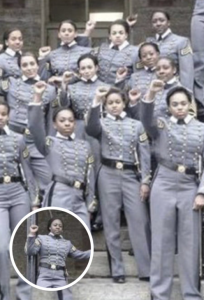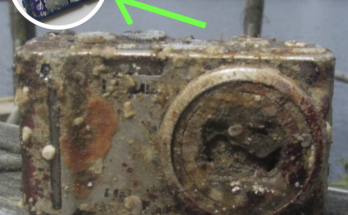Photo Of West Point Cadets Sparks Controversy: A Deep Dive Into The Uproar
In a year filled with social and political tension, a seemingly simple photograph taken at the United States Military Academy at West Point has ignited a storm of controversy, provoking strong reactions from across the country. What was meant to be a commemorative photo of pride and unity quickly became the focal point of a national debate surrounding military tradition, free expression, racial symbolism, and institutional values.
The Photo That Started It All
The image in question features a group of graduating African American female cadets, standing tall and proud in full dress uniform outside one of West Point’s iconic granite buildings. The women, who had completed four grueling years of academic, physical, and leadership training, gathered to take what they considered a powerful and symbolic photo. What sparked backlash was the gesture made by several of the cadets in the photo: each raised a clenched fist—a gesture historically associated with Black power, solidarity, and resistance.
Within hours of the image surfacing on social media, reactions flooded in. Some viewers praised the women for their strength, unity, and courage, calling the image “inspiring” and “iconic.” Others, however, criticized the photo as politically charged and inappropriate for individuals in military uniform, accusing the cadets of violating the military’s code of conduct and engaging in prohibited political expression while in uniform.
Understanding the Gesture
To fully grasp the implications, it’s crucial to understand the symbolism behind the clenched fist. Historically, the raised fist has served as a gesture of resistance against oppression and as a sign of unity, particularly within the African American community. It was most famously used by Tommie Smith and John Carlos during the 1968 Olympics, when the two athletes raised their fists on the medal podium in protest of racial discrimination in the United States. Since then, it has remained a symbol of Black empowerment and social justice activism.
For some, especially within marginalized communities, the cadets’ gesture was a declaration of pride—not a political statement, but a celebration of achieving success in a system that has historically excluded and marginalized people of color.
Backlash and Investigation
The image quickly caught the attention of military officials, alumni, political commentators, and watchdog groups. Critics argued that the photo blurred the line between personal identity and professional responsibility. Some questioned whether the gesture aligned with Department of Defense guidelines, which prohibit service members from making political statements while in uniform.
In response to the uproar, West Point launched an internal investigation to determine whether the cadets violated any policies. The investigation focused on whether the gesture constituted political activity and whether the cadets were promoting a specific agenda.
The academy released a statement emphasizing the importance of upholding military standards while also respecting individual backgrounds and experiences. “The United States Military Academy is committed to producing leaders of character. All cadets are expected to adhere to the standards of conduct and honor, regardless of intent,” the statement read.
The Public Weighs In
The incident touched a nerve in American society, revealing deep divisions in how people view race, patriotism, and military culture.
Supporters of the cadets defended the photo as a celebration of their identity and achievement. Many noted the rarity of Black women graduating from West Point, a school that only began admitting women in 1976 and has long struggled with diversity. The photo, they argued, was a powerful statement of progress and pride.
Conversely, detractors believed the gesture was inappropriate for future Army officers, calling it “divisive” and “unprofessional.” Some even called for the cadets to be disciplined or expelled. Conservative media outlets framed the image as an example of “identity politics” invading the military, while progressive voices defended it as a necessary act of representation in an institution still reckoning with systemic inequality.
The Final Decision
After a thorough review, West Point concluded that the cadets did not violate any Department of Defense policies. The investigation found that the gesture, while symbolic, was not tied to any specific political movement or campaign and therefore did not constitute prohibited political activity. The academy ruled that the cadets would not face punishment, allowing them to graduate with their class.
In a follow-up statement, West Point noted that the cadets had intended to show pride, strength, and solidarity—not to provoke controversy or express any particular ideology. “This matter has been reviewed thoroughly. The cadets were engaged in an informal photo session commemorating their success. There is no evidence of any intent to engage in political activity.”
What This Moment Means
The photo—and the firestorm it created—underscores the challenges faced by institutions like the military as they navigate issues of diversity, tradition, and expression in modern America. For many Black Americans, particularly those who serve, the ability to express pride in both their heritage and their country is not mutually exclusive. The cadets’ gesture spoke to the duality of their experience: serving an institution that has not always served them equally, while striving to be a part of shaping its future.
For West Point, the episode served as both a test and an opportunity—a chance to reaffirm its commitment to inclusion without compromising discipline and unity. It prompted conversations on campus and beyond about what it means to be a leader of character in a changing world.
A Legacy Beyond the Frame
Today, that image remains more than just a snapshot—it has become a symbol. To some, it is a reminder of the progress still needed in military and societal institutions. To others, it represents a challenge to deeply held beliefs about what the military should look like and stand for.
But to the cadets in the photo, now Army officers, it will always be a moment of pride. A visual reminder of how far they’ve come—not just individually, but as representatives of a broader struggle for equity and recognition.
In a time where images can define narratives and ignite national debates, the photo of the West Point cadets did just that—forcing America to confront the uncomfortable intersection of identity, expression, and service.

